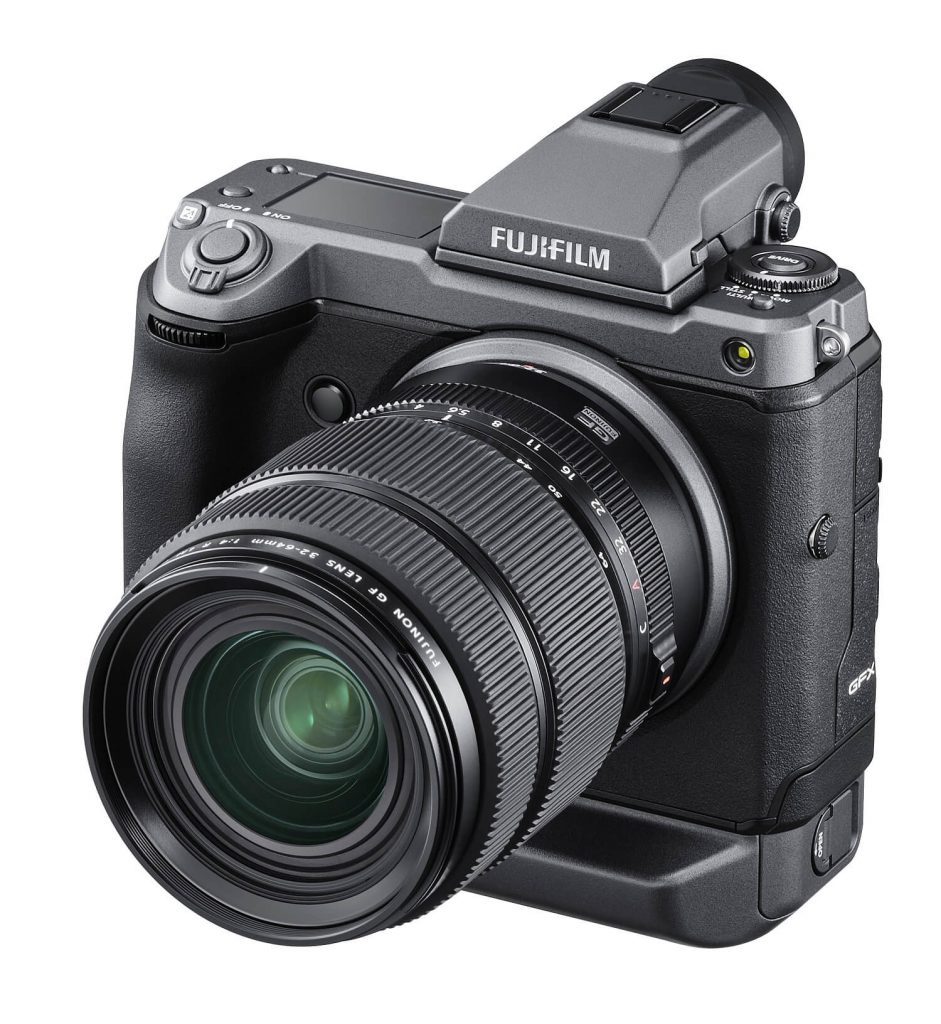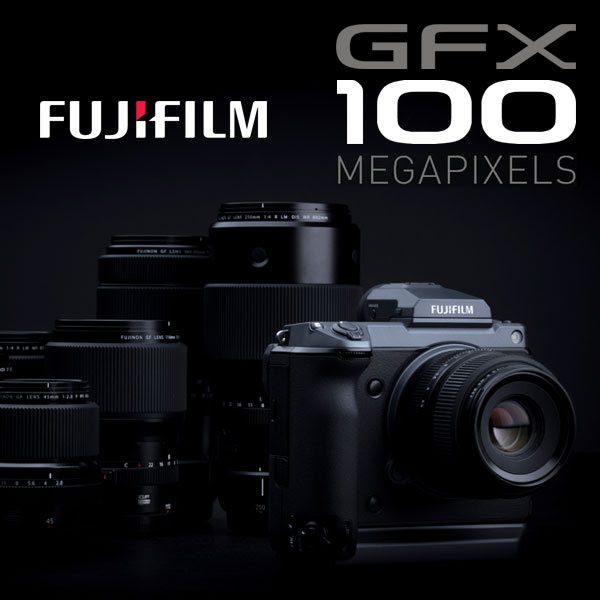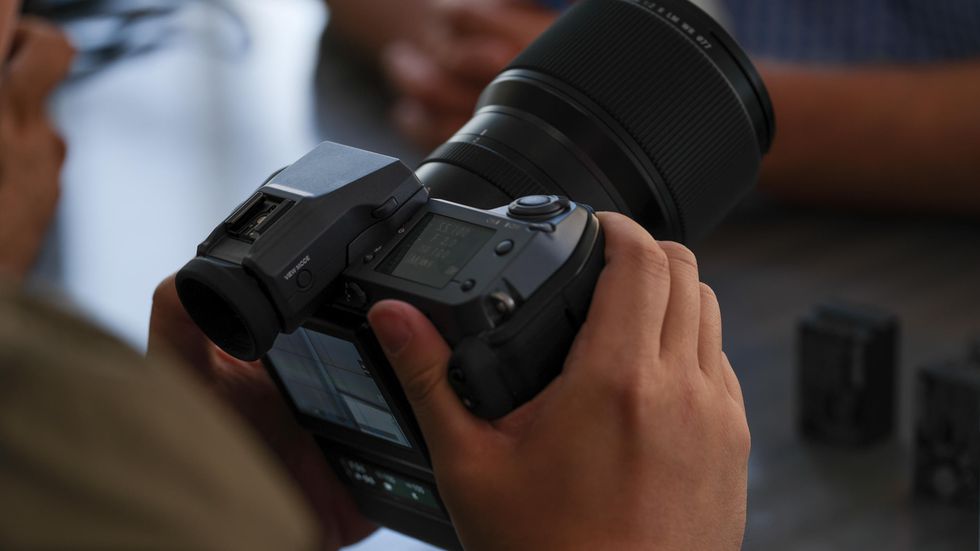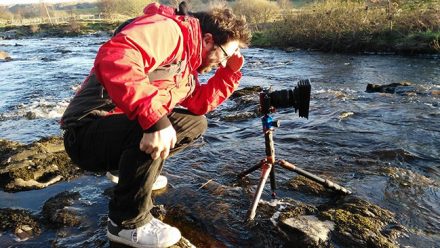Fujifilm GFX100, 100 Megapixel mirrorless Camera Unveiled
The Fujifilm GFX100 100-megapixel monster lands furnished with a large format sensor, promising world-leading image quality, offering rapid, sharp autofocus, in-body image stabilisation and 4K video capacity.

Carrying a hefty £9,999 price tag, the new Fujifilm GFX100 comes in at almost twice the cost of the GFX 50S, although this is still significantly less expensive than the cost of its closest [100-megapixel] rival, the Hasselblad H6D-100c, which comes in at £31,000!
With an expected landing date of late June, the new Fujifilm GFX100 promises to change the way we look at medium format cameras with significant innovation and superior image quality.
The 100 Megapixel sensor
The GFX100 houses a newly-developed large format sensor with a massive 102 million pixels resolution. It claims to produce world-leading photographic image quality when coupled with the latest fourth-generation ‘X-Processor 4’ high-speed image processing engine, FUJINON GF lenses and colour reproduction technology that’s been developed through the photographic film business over many years.
The image sensor has a back-illuminated structure with premium light-receiving performance. The sensor takes advantage of its wide dynamic range to achieve rich tonal reproduction and low noise, while also achieving high-speed readout of image data despite the massive pixel count.
Fast and precise phase detection AF
The GFX100 boasts accurate AF with the ability to track moving subjects at a speed up to twice that of current models. This equates to the level of mobility that sets a new standard for digital cameras using an image sensor larger than the 35mm full-frame format.
As many as 3.78 million phase detection pixels are placed across the image sensor [approx. 100% coverage], quickly focusing on the subject regardless of where the subject is within the frame. Furthermore, the GFX Series adopts the latest phase detection AF algorithm, already popular with FUJIFILM X-T3 and FUJIFILM X-T30 in the X Series of Fujifilm’s mirrorless digital cameras, to achieve high-speed and high-precision AF in the ‘Single Point’ as well as ‘Zone’ and ‘Wide Tracking’ of the focus area.
The GFX100 promises dramatic improvement in the accuracy of Face and Eye Detection AF, which has become an essential function in fashion and portrait photography. The Face Detection now works with a greater shooting distance and displays tracking performance even for the side profile of a person or a subject that is partially blocked by an obstacle.

5.5-stop five-axis in-body image stabilisation
The GFX100 is the first medium format camera to be equipped with a five-axis IBIS mechanism that delivers image stabilisation of up to 5.5 stops. Taking advantage of its sensor-shift structure, the IBIS stabilises images not only against pitch and yaw movements [up / down and right / left tilting] but also against shift [vertical / horizontal] and roll [rotational] movements. The entire shutter unit is suspended with four springs to minimise the effect of shutter shock. This broadens the scope of situations where users can hand-hold the camera and still enjoy the super-high 102 million pixels resolution.
4K/30P video recording capability
The combination of the new image sensor with high-speed readout and the high-performance ‘X-Processor 4’ image-processing engine gives the new camera a capability of capturing smooth motions at 30fps in 4K video.
When the DCI [aspect ratio of 17:9], a standard format for digital cinema cameras, is selected, the GFX100 records video with a sensor area measuring about 49.5mm diagonally. The size, bigger than that of large sensors increasingly adopted by high-end cinema cameras, results in outstanding high ISO performance, shallow depth-of-field capability and wide tonal reproducibility. This promises to make it easier than ever before to produce premium-quality video footage with more detailed textures and three-dimensional definitions while even capturing the atmosphere of the scene.
The GFX100 uses oversampling with the amount of data equivalent to approx. 50.5 million pixels to render video with exceptionally high resolution. It also supports the highly efficient H.265/HEVC compression codec as well as the ‘F-Log’ mode that reproduces rich tonal gradation and the ‘Hybrid Log Gamma [HLG]’ for recording HDR [high dynamic range] footage with ease. For the first time in the GFX Series, GFX100’s Film Simulation options, which allow users to enjoy a variety of colour and tonal reproductions, include ‘ETERNA’ for simulating the colours and tones of Fujifilm’s cinema film. This enables faithful reflection of videographers’ artistic intentions to video production.
Video is recorded to SD card at 4K 30P 10bit 4:2:0 and on external media via HDMI at 4K 30P 10bit 4:2:2.
Light yet tough
The new camera body is tough due to the use of magnesium alloy and the ‘inner frame’ structure of coupling the image sensor, IBIS and lens mount into an integrated unit. Weather-sealing is applied to 95 locations to make the body highly resistant to dust, moisture and low temperatures, catering to the tough shooting conditions of professional photographers in many challenging situations.
For the first time in any Fujifilm camera, a vertical grip has been built into the camera body, making it stable and comfortable to hold.

Monitoring
The new Fujifilm GFX100 has a new 2.05-inch sub monitor on the rear panel in addition to the main 3.2-inch LCD monitor that can be tilted to three directions. Exposure settings and various other shooting data can be assigned to the rear-panel sub monitor so that the main monitor can be dedicated to checking framing, allowing users to focus on composition.
The top panel also features another new 1.80-inch sub LCD monitor, which can be set to the ‘Virtual Dial Mode,’ displaying a virtual dial for simulated operation. This is a perfect function for users who prefer dial-based operations, adopted in GFX Series’ current models.
The number of dials, buttons and levers on the camera body has been kept to the minimum for simplicity of camera operation. The top panel features the Drive Mode Dial, which allows for quick switchover between the still image, video and multiple exposure modes. Each of these modes can store settings such as exposure settings, white balance and Film Simulation selection. That means it only requires just single dial action to recall optimum camera settings, ensuring ease of camera operation.
Check out the view[finder]
Featuring what Fujifilm describes as being the world’s top-class ultra-high definition detachable electronic viewfinder [EVF] with more than 5.76M million dots for accurate focusing, the GFX100’s EVF is newly-developed for this model using the world’s top-class 5.76 million-dot OLED panel and five optical glass elements including aspherical elements. With the viewfinder magnification of 0.86x and 100% viewfinder coverage, the EVF enables accurate focusing for the 102 million pixels sensor, which requires extreme focusing accuracy.
The EVF can be set to the ‘Frame Rate Priority,’ ‘Resolution Priority’ or ‘AF Speed Priority’ mode according to subject characteristics.
16bit RAW and 16bit TIFF for professional photographers
Fujifilm has responded to requests from many professional photographers by allowing photos to be saved in ’16bit RAW’ and ’16bit TIFF’, significantly improving photo data’s tolerance to post-processing. This means the camera’s rich tonal gradation and Fujifilm’s unique colour reproduction modes can be effectively utilised at the forefront of professional photography.
The GFX100 also features the newly-developed ‘Smooth Skin Effect’ function, which automatically smooths the skin tone, reducing the amount of post-processing work required in portraiture.

Dual battery power and USB charging
The GFX100 can take two GFX Series batteries [NP-T125], extending the number of frames per charge to approx. 800 when the rear LCD is used.
The camera can also be powered and charged through USB connection. Connecting an external battery that supports USB Power Delivery enables even longer continuous shooting and simultaneous charging of the two batteries in the camera.
This is the first GFX Series model that has a supporting IEEE802.11ac 5GHz, enabling even faster wireless image transfer.
For RAW processing and tethered shooting, similarly to previous GFX Series models, the GFX100 is compatible with ‘Tether Shooting Plug-in PRO for Adobe® Photoshop® Lightroom®’ and ‘Capture One Pro FUJIFILM’ to accommodate the diverse workflow of professional photographers.
Pricing and availability
The new Fujifilm GFX 100 is due to arrive in-store at the end of June and will come with a substantial £9,999 price tag, [body only – including viewfinder and two batteries].
More information on the Fujifilm GFX100 can be found on the Fujifilm website
View more of PhotoBite’s Fujifilm articles





